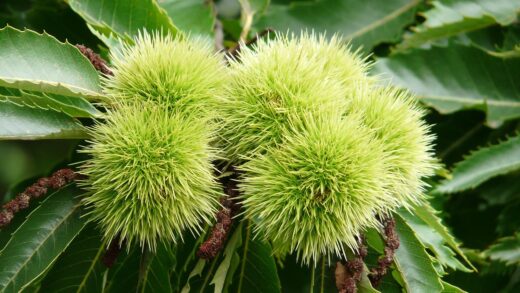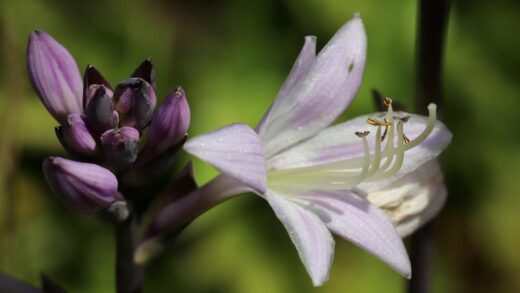Diseases and pests of the black-eyed susan vine

While the black-eyed susan vine is generally a robust and vigorous plant, it is not entirely immune to the challenges posed by various diseases and pests. Proactive monitoring and good cultural practices are the most effective strategies for keeping these problems at bay. Most issues, if identified early, can be managed with simple, often organic, interventions. Understanding the common culprits, recognizing their symptoms, and knowing the appropriate control measures will ensure that the vine remains a healthy and beautiful feature in the garden throughout the growing season.
The health of a plant is intrinsically linked to its growing conditions. A plant that is stressed due to improper watering, insufficient light, or poor nutrition is significantly more susceptible to both pest infestations and disease infections. Therefore, the first line of defense is always to provide the optimal environment for the vine to thrive. Strong, healthy plants have more robust natural defenses and are better able to withstand or recover from an attack. Regular inspection of the plant is also critical, as early detection dramatically increases the chances of successful control.
Common pests that may affect Thunbergia alata are typically sap-sucking insects like aphids, spider mites, and whiteflies. These pests use their piercing mouthparts to feed on the plant’s fluids, which can lead to distorted growth, stippled or yellowing leaves, and a general decline in the plant’s vigour. In large numbers, they can cause significant damage and may also produce a sticky substance called honeydew, which can lead to the growth of sooty mold.
In terms of diseases, the black-eyed susan vine is most commonly troubled by fungal issues, which are often exacerbated by high humidity, poor air circulation, and overhead watering. Problems like powdery mildew and root rot are prevalent in suboptimal conditions. These diseases can mar the appearance of the foliage, inhibit photosynthesis, and, in the case of root rot, threaten the very life of the plant. Prevention through proper spacing, watering techniques, and site selection is far more effective than trying to cure an established infection.
Identifying common insect pests
Aphids are one of the most frequent pests found on the black-eyed susan vine. These are small, pear-shaped insects that can be green, black, or yellow, and they tend to congregate in clusters on new growth, tender stems, and the undersides of leaves. They feed on the plant’s sap, which can cause new leaves to become curled, distorted, and stunted. Aphids also excrete a sticky honeydew that can attract ants and promote the growth of black sooty mold on the leaf surfaces.
More articles on this topic
Spider mites are another common adversary, especially in hot, dry conditions. These pests are technically arachnids, not insects, and are incredibly tiny, making them difficult to see with the naked eye. The first sign of their presence is often a fine, silky webbing on the undersides of leaves and at the junctions of stems and leaves. They cause damage by piercing leaf cells to suck out their contents, resulting in a fine, yellowish or whitish stippling on the upper surface of the leaves. A severe infestation can cause leaves to turn yellow or bronze and eventually drop off.
Whiteflies can also become a problem, particularly in warm climates or greenhouse settings. These are small, moth-like insects that, as their name suggests, are white in color. They typically gather on the undersides of leaves and will fly up in a cloud when the plant is disturbed. Like aphids and spider mites, they feed on plant sap, causing yellowing and weakening of the plant. They also produce honeydew, leading to the secondary problem of sooty mold.
Caterpillars, while less common, can occasionally feed on the leaves of the black-eyed susan vine. The damage is usually easy to identify, characterized by holes chewed in the leaves or ragged leaf edges. The caterpillars themselves may be well-camouflaged and can be found on the undersides of the leaves. While a small amount of caterpillar feeding is often just cosmetic damage, a large infestation can defoliate and weaken the plant.
Organic and chemical pest control
For most common pests on Thunbergia alata, organic control methods are highly effective and should be the first course of action. A strong spray of water from a hose is often sufficient to dislodge and control small populations of aphids and spider mites. This method is non-toxic and can be repeated every few days as needed. It is important to target the undersides of the leaves where these pests tend to congregate.
More articles on this topic
Insecticidal soaps and horticultural oils are excellent tools for managing larger infestations of soft-bodied insects like aphids, spider mites, and whiteflies. These products work by smothering the pests or disrupting their cell membranes, and they have a low impact on beneficial insects when used correctly. They must be applied thoroughly, ensuring complete coverage of all plant surfaces, especially the undersides of leaves, as they only work on direct contact with the pest. Repeat applications are usually necessary to control newly hatched pests.
For caterpillar infestations, manual removal is often the most practical solution. Simply pick the caterpillars off the plant by hand and dispose of them. For larger infestations, products containing Bacillus thuringiensis (Bt), a naturally occurring bacterium that is toxic only to the larvae of moths and butterflies, can be used. This is a highly specific and effective organic control method that does not harm other insects, animals, or humans.
If chemical pesticides are considered as a last resort, it is crucial to choose a product that is labeled for use on ornamental flowering plants and is effective against the specific pest identified. Broad-spectrum insecticides should be used with extreme caution as they will kill beneficial insects, such as pollinators and predators of pests, which can disrupt the garden’s ecosystem and potentially lead to more severe pest outbreaks in the future. Always read and follow the label instructions carefully for application rates and safety precautions.
Preventing and managing fungal diseases
Powdery mildew is a common fungal disease that can affect the black-eyed susan vine, particularly in humid weather or in areas with poor air circulation. It appears as a white or grayish powdery coating on the surfaces of leaves, stems, and sometimes flowers. While it rarely kills the plant, it is unsightly and can reduce the plant’s vigour by interfering with photosynthesis. Prevention is key: ensure good spacing between plants to promote air movement and water at the base of the plant to keep the foliage dry.
If powdery mildew does appear, it can often be managed with organic fungicides. Sprays made from potassium bicarbonate, neem oil, or horticultural oil can be effective in controlling its spread. These treatments work by altering the pH of the leaf surface or by smothering the fungal spores. It is important to apply these treatments at the first sign of the disease and to ensure thorough coverage of all affected parts of the plant.
Root rot is a much more serious disease, typically caused by fungi that thrive in overly wet, poorly drained soil. The symptoms of root rot can be deceptive, often appearing as wilting, yellowing leaves, and stunted growth, which might be mistaken for underwatering. However, the soil will be consistently wet, and upon inspection, the roots will be brown, mushy, and unhealthy instead of firm and white.
Preventing root rot is entirely about providing the right growing conditions. The single most important factor is excellent drainage. Use a well-draining potting mix for containers, and ensure the pots have adequate drainage holes. In garden beds, amend heavy clay soils with organic matter to improve their structure. Once root rot has become established, it is very difficult to treat, and it is often best to discard the affected plant to prevent the disease from spreading.
Recognizing environmental stress
Sometimes, what appears to be a disease or pest problem is actually a symptom of environmental or cultural stress. The black-eyed susan vine is quite expressive and will show visible signs when its growing conditions are not ideal. Differentiating between stress symptoms and disease symptoms is an important diagnostic skill for a gardener.
Leaf scorch, for example, appears as brown, crispy edges on the leaves and can occur when the plant is exposed to excessively intense sun, hot drying winds, or if it is not receiving enough water to compensate for moisture loss. This is not a disease but a physiological response to harsh conditions. Providing some afternoon shade or increasing watering frequency during heatwaves can alleviate this issue.
Yellowing leaves (chlorosis) are a common sign of stress that can have multiple causes. As mentioned, it can be a symptom of overwatering or underwatering. It can also indicate a nutrient deficiency, particularly a lack of nitrogen. Assessing the soil moisture and the plant’s feeding history is necessary to determine the correct course of action. A systematic process of elimination is often the best way to diagnose the underlying problem.
Flower and bud drop can also be an alarming symptom. This can be caused by sudden changes in temperature, inconsistent watering (swinging from very dry to very wet), or a lack of pollination. While some bud drop can be natural, an excessive amount usually points to an environmental stressor. Maintaining consistent care practices is the best way to prevent these types of stress-related symptoms and keep the vine healthy and productive.
📷 Forest & Kim Starr, CC BY 3.0, via Wikimedia Commons



















